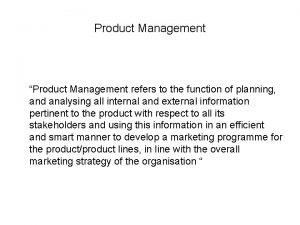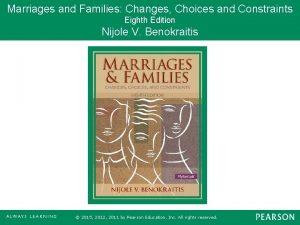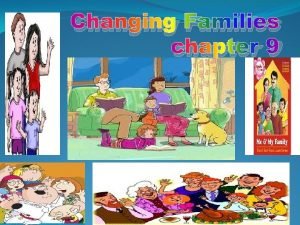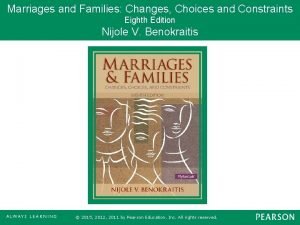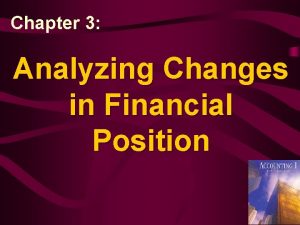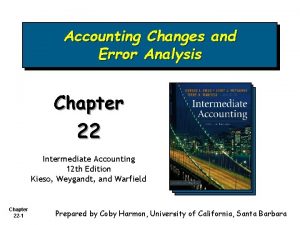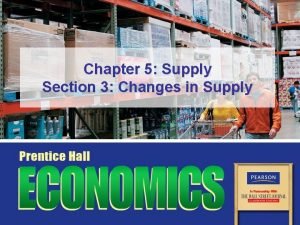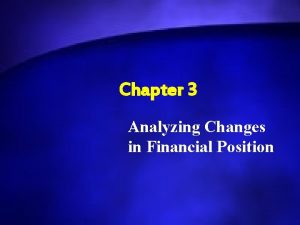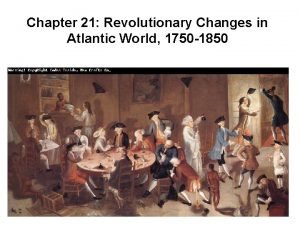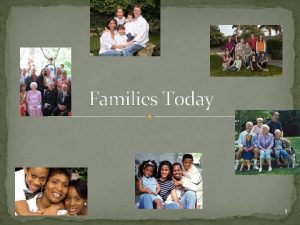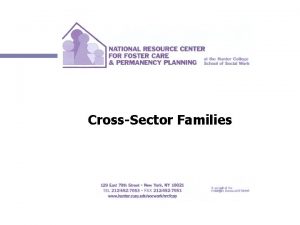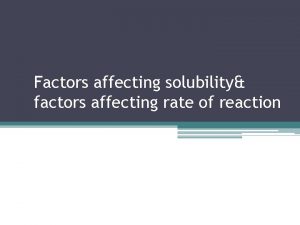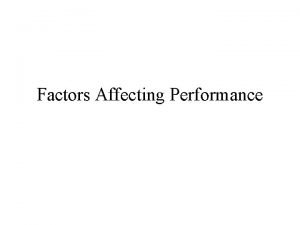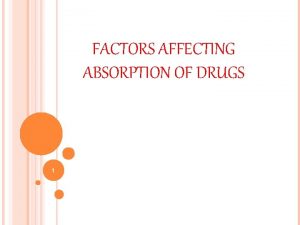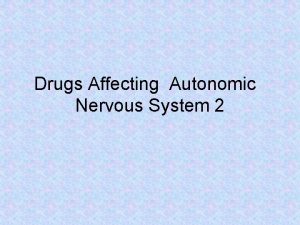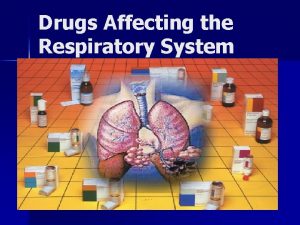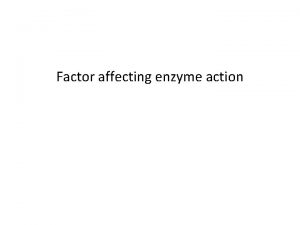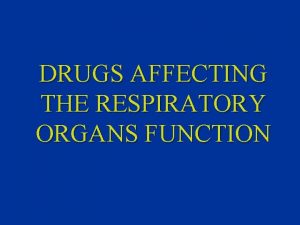Chapter 2 Families Today Changes Affecting Families Today


















- Slides: 18

Chapter 2 Families Today

Changes Affecting Families Today q Age at first marriage has increased q Birthrates declined for most of the 90’s, but slight increases are now being seen q Family sized has remained small q More women are working for economic reasons & personal fulfillment q The rate of marital separation & divorce rate is high q The rate of single parent families is increasing

Family Types

Two-Parent Families A family consisting of a father, a mother, and their biological child or children who live together.

Single-Parent Families Are families headed by one adult. q These families form when a parent dies, parents divorce or separate, or a single parent adopts children q This could also happen if parents have children outside of marriage or a parent deserts the family

Extended Family A family in which several generations live together Includes: Parents, children & one or more grandparents

Stepfamilies A family formed when a single parent marries another person. FACT: Many of today’s children have 2 stepfamilies—that of the father and his new wife and that of the mother and her new husband

Families w/ Adopted Children ADOPTION occurs when a child of one pair of parents legally becomes the child of another parent or parents Ø This process legally ends the rights & responsibilities between a child & the birthparents (biological parents)

Reasons People Adopt q The couple cannot give birth or can give birth only with great difficulty q The couple may want to add to their current family q The couple know a child who needs a home q A single person wants to be a parent & provide a home for children

How to Adopt 1) Adoption agency: an agency licensed by the state to handle adoptions q 2) It is either STATE FUNDED—such as agencies that also handles foster care—or PRIVATE—managed by a church or organization Independent Adoption: a person, such as a lawyer or physician, works out the details between the birth parents & adoptive parents

Adoption Options q CLOSED ADOPTION: an adoption in which the identity of the birthparents & adopting family are not revealed to each other —the 2 sides do not meet or contact each other q OPEN ADOPTION: a type of adoption that involves some degree of communication between birthparent (s) and adoptive family

Foster Families in which adults provide temporary homes for children who cannot live with their birthparents. q. These parents fill this role until the children are reunited with their birthparents or placed in adoptive homes

Family Life Cycle A series of 6 stages which many families go through over the years

The Family Life Cycle q. Beginning stage q. Childbearing stage q. Parenting stage q. Launching stage q. Mid-years stage q. Aging stage Figure 2 -7 Page 65


Roles of Parents q Socialization—this is the training children receive to help them learn to live in a group (rules & ways of doing things must be learned—child do not automatically know this) q Nurturance—includes the physical aspects of child care, such as feeding, dressing & meeting emotional & social needs, such as helping children feel secure & loved. q BOTH mother & father play an important role in nurturing their children

Roles of Parents CONT. q. Guidance—includes the words & actions parents used to influence their child’s behavior q. Discipline—is the use of methods & techniques to teach children self control

Parenting Styles q Authoritarian—parenting style in which the main objective is to make children completely obedient q Permissive—parenting style in which parents give children almost no guidelines or rules q Democratic—parenting style in which parents set some rules but allow children some freedom
 Changes in latitudes, changes in attitudes meaning
Changes in latitudes, changes in attitudes meaning Physical change
Physical change Changes affecting product management
Changes affecting product management Marriages and families changes choices and constraints
Marriages and families changes choices and constraints Nazils
Nazils Marriages and families changes choices and constraints
Marriages and families changes choices and constraints Big families vs small families
Big families vs small families For todays meeting
For todays meeting In today's class
In today's class Proposal kickoff meeting agenda
Proposal kickoff meeting agenda Fingerprint ridge characteristics worksheet
Fingerprint ridge characteristics worksheet Today's lesson or today lesson
Today's lesson or today lesson Today's lesson or today lesson
Today's lesson or today lesson Chapter 3 analyzing changes in financial position answers
Chapter 3 analyzing changes in financial position answers Chapter 10:5 meeting the needs of the elderly
Chapter 10:5 meeting the needs of the elderly Chapter 22 accounting changes and error analysis solutions
Chapter 22 accounting changes and error analysis solutions Chapter 5 section 3 changes in supply
Chapter 5 section 3 changes in supply Chapter 3 analyzing changes in financial position answers
Chapter 3 analyzing changes in financial position answers Chapter 21 revolutionary changes in the atlantic world
Chapter 21 revolutionary changes in the atlantic world


